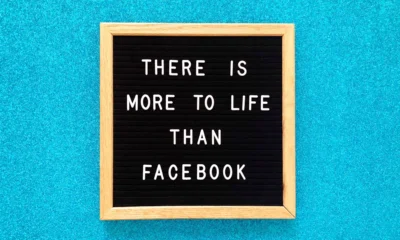Social media has become an integral part of our lives, and understanding the major players in this field is essential to navigate the digital landscape. In this article, we’ll take a deep dive into the world of major social media platforms, exploring their histories, features, and impacts on our society.
Table of Contents
1. Introduction
2. Facebook: The Social Networking Giant
History and Evolution
Key Features
Impact on Society
3. Twitter: The Microblogging Platform
History and Evolution
Key Features
Impact on Society
4. Instagram: The Visual Social Network
History and Evolution
Key Features
Impact on Society
5. LinkedIn: The Professional Networking Hub
History and Evolution
Key Features
Impact on Society
6. YouTube: The VideoSharing Giant
History and Evolution
Key Features
Impact on Society
7. TikTok: The ShortForm Video Phenomenon
History and Evolution
Key Features
Impact on Society
8. Summary
9. FAQ
Introduction
Social media has transformed the way we connect, communicate, and share information. Major social platforms have unique features and cater to different aspects of our lives, from personal connections to professional networking and creative expression. Let’s take a closer look at these platforms.
Facebook: The Social Networking Giant
History and Evolution
Facebook was founded in 2004 by Mark Zuckerberg and his college roommates. It started as a platform exclusively for college students but quickly expanded to a global audience. Over the years, Facebook has acquired other platforms, such as Instagram and WhatsApp, to broaden its reach.
Key Features
News Feed: The central feature of Facebook, where users can see posts from friends and pages they follow.
Groups: Communities where users can discuss shared interests.
Messenger: A chat platform for text, voice, and video communication.
Impact on Society
Facebook has influenced the way we connect with friends and family, share life moments, and discover news and content. It has been a tool for social activism and political movements.
Twitter: The Microblogging Platform
History and Evolution
Twitter was launched in 2006 as a microblogging platform where users could post short messages, or “tweets.” It has grown to become a hub for realtime news and trends.
Key Features
Tweets: Short messages limited to 280 characters.
Hashtags: Used to categorize and discover content.
Retweets and likes: To amplify and engage with content.
Impact on Society
Twitter has redefined how news is shared and consumed. It has played a significant role in political discourse, giving a voice to activists and ordinary citizens.
Instagram: The Visual Social Network
History and Evolution
Instagram, founded in 2010, focused on visual content, allowing users to share photos and short videos. It was acquired by Facebook in 2012.
Key Features
Feed: A stream of photos and videos from accounts users follow.
Stories: Ephemeral content that disappears after 24 hours.
IGTV: A platform for longer video content.
Impact on Society
Instagram has become a platform for visual storytelling, personal branding, and influencer marketing. It has shaped modern aesthetics and trends.
LinkedIn: The Professional Networking Hub
History and Evolution
LinkedIn, established in 2002, is a platform for professional networking and job seeking.
Key Features
Profiles: Users create professional profiles highlighting their skills and experiences.
Connections: Building a network of professional contacts.
Job postings: Employers can post job opportunities, and job seekers can apply directly.
Impact on Society
LinkedIn has become essential for career networking, job searches, and businessrelated content sharing.
YouTube: The VideoSharing Giant
History and Evolution
YouTube, founded in 2005, revolutionized video sharing and consumption. It allows users to upload, watch, and share videos.
Key Features
Videos: A wide range of content, from educational to entertainment.
Subscriptions: Users can subscribe to channels.
Monetization: Content creators can earn revenue from ads.
Impact on Society
YouTube has transformed how we consume video content, enabling anyone to become a content creator.
TikTok: The ShortForm Video Phenomenon
History and Evolution
TikTok, launched in 2016, is known for shortform videos set to music. It has rapidly gained popularity, especially among younger users.
Key Features
Short videos: Typically 15 to 60 seconds in length.
Soundtracks: Users can add music to their videos.
Challenges: Popular trends and challenges drive content creation.
Impact on Society
TikTok has taken the world by storm, redefining content creation and the way we engage with short videos.
Summary
Facebook connects people and is a platform for social networking and activism.
Twitter is a microblogging platform that influences realtime news and discussions.
Instagram is the goto platform for visual content, shaping aesthetics and trends.
LinkedIn is crucial for professional networking and job seeking.
YouTube revolutionizes video sharing and content creation.
TikTok dominates the shortform video scene, particularly among younger users.
FAQ
1. What is the most popular social media platform?
The popularity of social media platforms varies by demographics and interests. Facebook, Instagram, and YouTube are among the most popular, but the choice depends on individual preferences.
2. How do I create a professional profile on LinkedIn?
To create a professional LinkedIn profile, sign up, add your education and work experience, connect with colleagues, and engage with industryrelated content.
3. What are the benefits of using Twitter for businesses?
Twitter can help businesses connect with customers, gain brand visibility, and share realtime updates and promotions.
4. Can I make money on YouTube as a content creator?
Yes, content creators can monetize their YouTube channels through ad revenue, sponsorships, merchandise sales, and other income streams.
5. How can I use TikTok for marketing my brand or business?
TikTok offers opportunities for businesses to create engaging, shortform video content, collaborate with influencers, and run advertising campaigns to reach a wide audience.

 Technology & Innovation6 years ago
Technology & Innovation6 years ago
 Technology & Innovation7 years ago
Technology & Innovation7 years ago
 Technology & Innovation11 months ago
Technology & Innovation11 months ago
 Technology & Innovation7 years ago
Technology & Innovation7 years ago
 Technology & Innovation11 months ago
Technology & Innovation11 months ago
 Technology & Innovation11 months ago
Technology & Innovation11 months ago
 Technology & Innovation11 months ago
Technology & Innovation11 months ago


